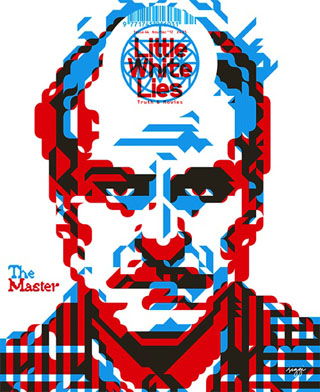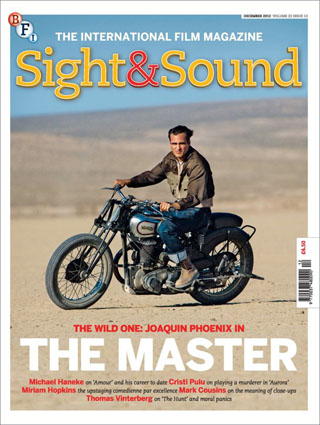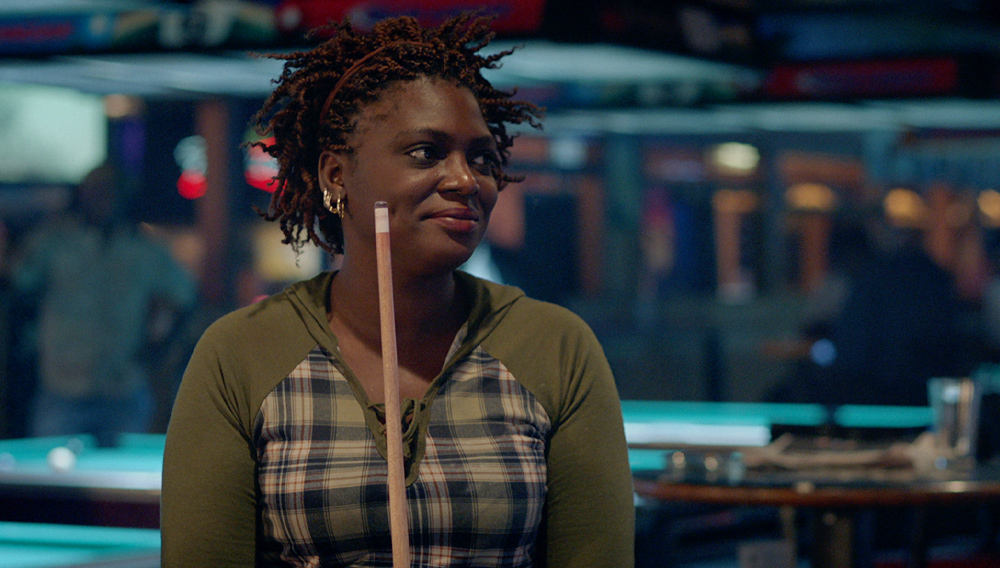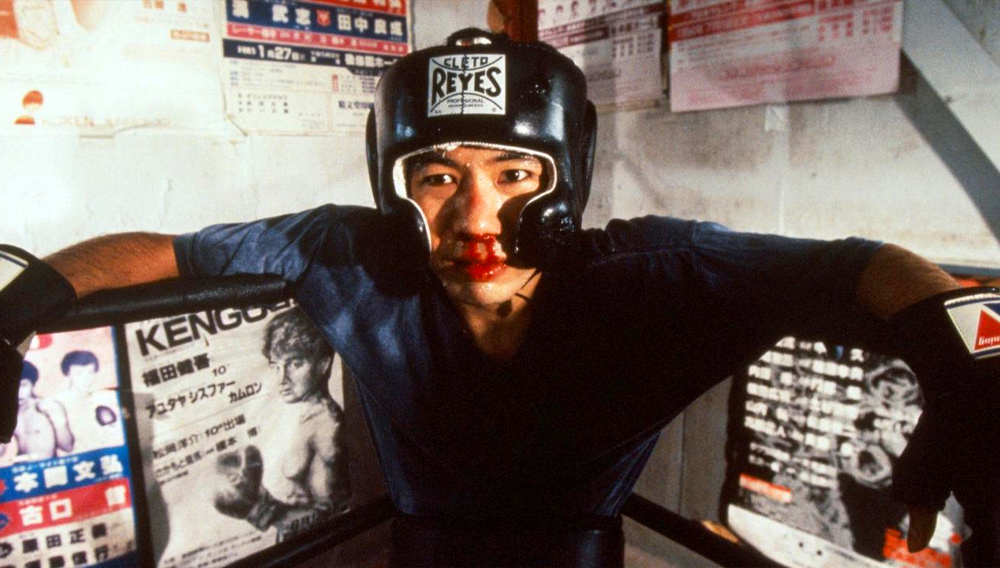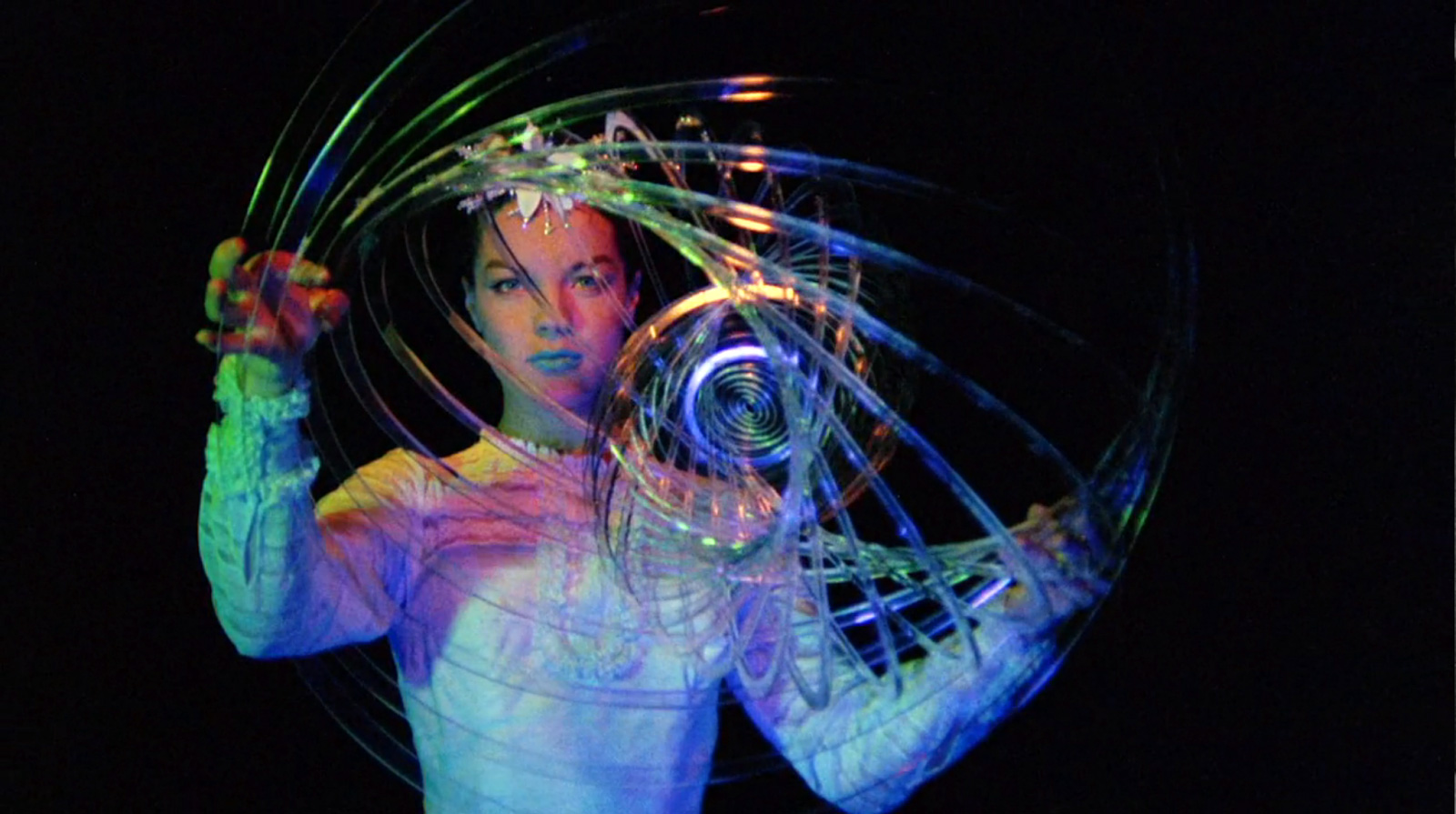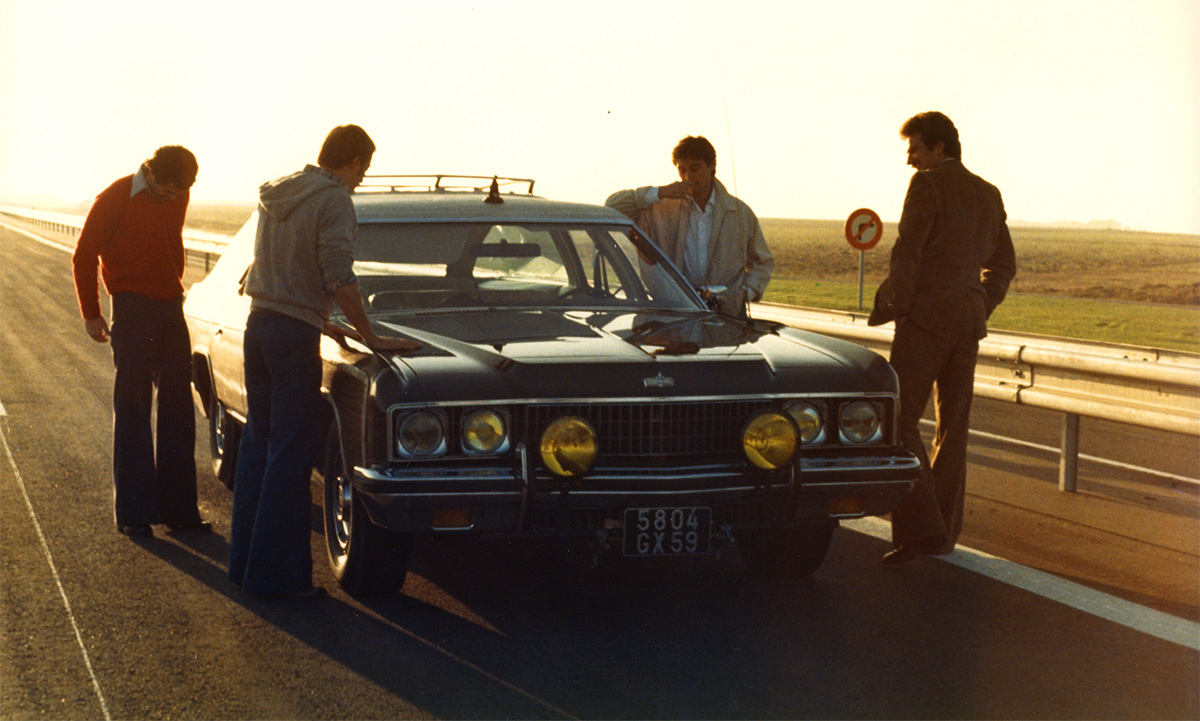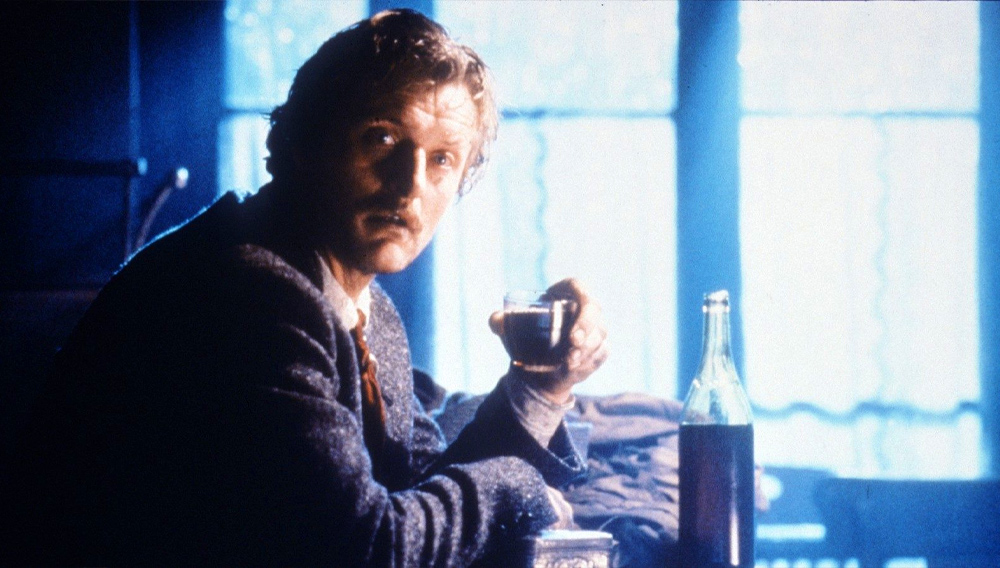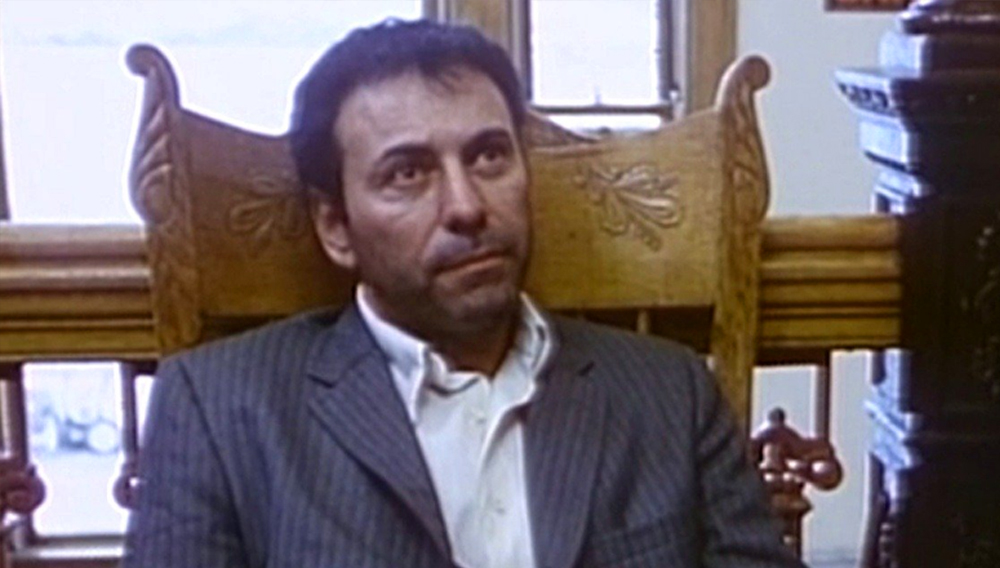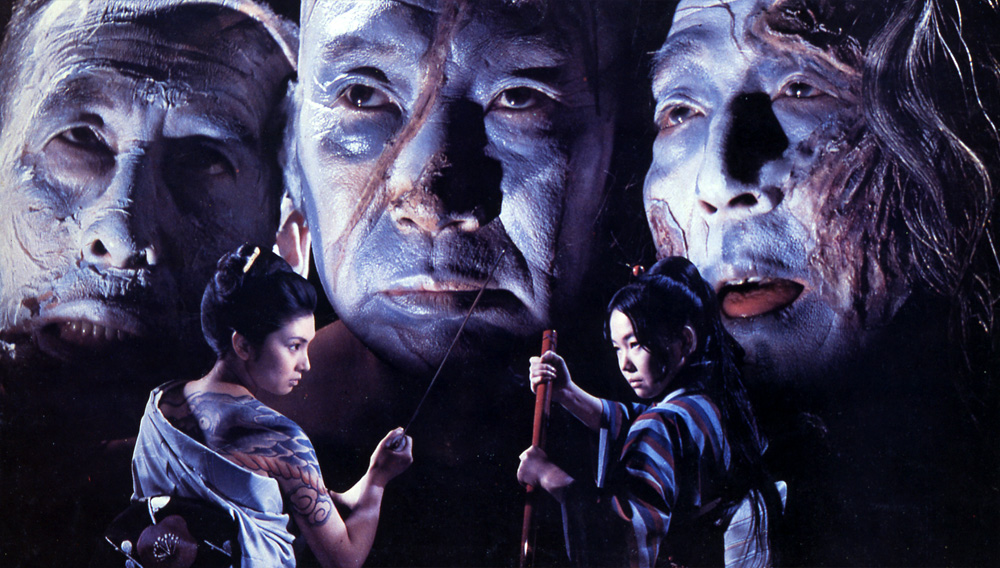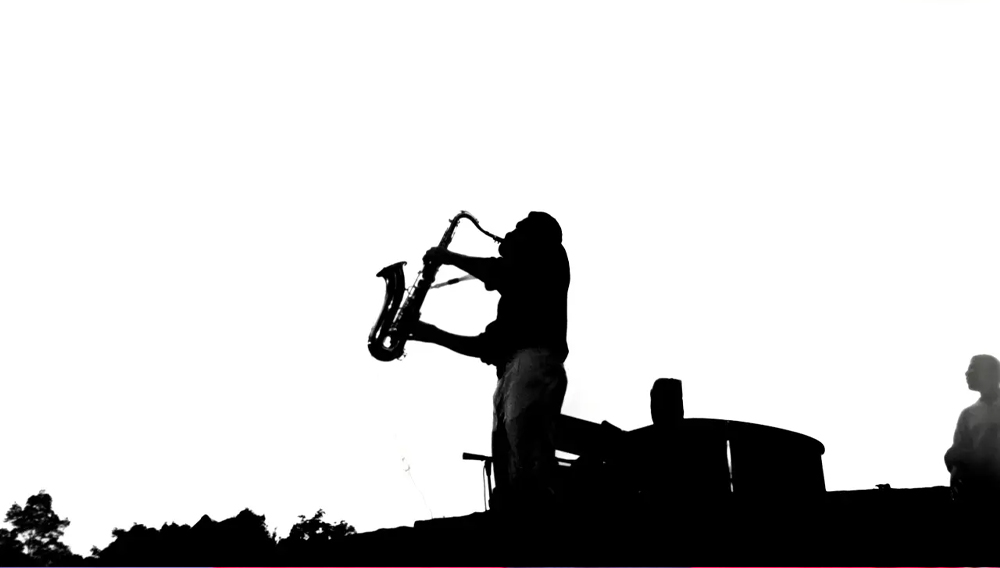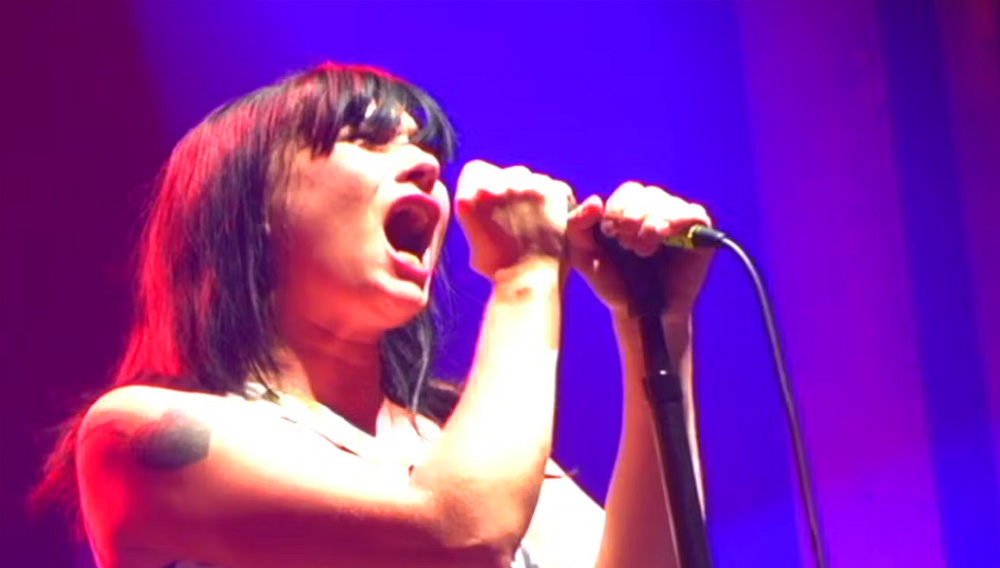If you thought we were through with Paul Thomas Anderson’s The Master—at least until awards season ramps up—after that marathon entry that ran from early September through the end of October, well, it’s just opened in the U.K. Besides, there’s also a bit of newish news: at Slashfilm, Germain Lussier notes that the final cut “was noticeably missing some distinctive shots from its earlier trailers. We can now confirm they’ll be on the DVD, edited together in about a 20 minute pastiche of the entire film, echoing its themes through deleted and extended takes.” And he presents “a detailed rundown of the footage including how it relates to the movie in theaters.”
For Sight & Sound, Nick Pinkerton writes that The Master “isn’t just a divisive film—it’s a divided film, a film of two portraits hung pendant. Like Anderson’s last historical fiction, There Will Be Blood (2007), which centered on the grudge match between Daniel Day-Lewis’s Daniel Plainview (commerce) and Paul Dano’s Eli Sunday (religion), The Master is written around the jockeying juxtaposition of two American archetypes, a comparison revealing real divergences as well as a national family resemblance.” These two archetypes are, of course, Freddie Quell, “a great character, redolent with associations, and [Joaquin] Phoenix does urgent, erratic work here, making him the most extravagantly ruined screen drunk since James Dean’s in Giant (1956)”; and Philip Seymour Hoffman’s Lancaster Dodd, who “belongs to a lineage of self-styled prophets and confidence men through history.”
“Frank Capra‘s The Miracle Woman (1931), featuring the young Barbara Stanwyck as a version of evangelist Aimee Semple McPherson, Richard Brooks’s 1960 adaptation of the Sinclair Lewis novel Elmer Gantry, with Burt Lancaster as a salesman turned revivalist, and John Huston’s 1979 adaptation of the Flannery O’Conner novella Wise Blood, with Brad Dourif as a backwoods preacher, were prophets crying in the wilderness,” writes J. Hoberman in the Guardian. “The Master is something else. Anderson’s movie sometimes verges on comedy but it is hardly a satire, or even a critique, of the Cause. Rather, it treats Dodd’s existence as a fact of life…. Todd Haynes‘s 2011 made-for-TV adaptation of the James M. Cain novel Mildred Pierce notwithstanding, Anderson is the lone American filmmaker of his generation who could be mistaken for a junior member of Hollywood’s last golden age.”
“As in another Hoffman vehicle, Charlie Kaufman’s Synecdoche, New York, a virtuoso first hour dribbles into meandering self-indulgence and a frustratingly half-baked finale,” finds Neil Young, writing for the Tribune. “For a much more penetrating and coherent tale of a troubled soul in thrall to a charismatic 1950s cult-leader, dig out Philip K. Dick’s long-lost ‘mainstream’ novel Voices From the Street, a nightmarishly brilliant vision of mental breakdown that makes The Master, for all its technical prowess, seem triflingly immature in comparison.”
“When I first saw The Master,” writes the Guardian‘s Peter Bradshaw, “I saw it as an eloquent drama of ideas, a Foucauldian account of unreason, all about crazy and marginal worldviews excluded from mainstream histories of the western enlightenment. On a second viewing, I responded far more to the personal story of Quell and Dodd, and their absurd, sinister and poignantly doomed love story…. The Master is a supremely confident work from a unique film-maker, just so different from the standard Hollywood output: audacious and unmissable.”
More from Nigel Andrews in Financial Times, where he suggests that The Master “is surely, in part, an American homage to that Russian masterpiece about satanic charlatanism,” Mikhail Bulgakov’s The Master and Margarita; from Robbie Collin in the Telegraph (5/5), where Lucy Broadbent interviews Amy Adams, who plays Dodd’s wife, Peggy; and from Dave Calhoun (Time Out, 5/5), Rachel Cooke (Observer), Karen Krizanovich (Arts Desk), Anthony Quinn (Independent, 3/5), Jonathan Romney (Independent, 5/5), and Adam Woodward (Little White Lies).
Update, 11/11: PTA, talking to Time Out‘s Dave Calhoun about Joaquin Phoenix: “Listen, God, how mad can you be at an actor that’s that good at his job and that bad at promoting your film? I wouldn’t change it for anyone. It’s so hard to be mad at anyone who can’t function in that way. Isn’t it fun when someone can’t fucking stand it? I want my movie stars to be dangerous, annoyed and incapable of taking horseshit. I prefer them that way.”
Updates, 11/16: “I wish I could have come out of Paul Thomas Anderson’s The Master flush with excitement at having seen The Great American Movie so many seem to think it is,” writes Dennis Cozzalio, “because I really respected Anderson’s attempt to work out the poetry and intricately rendered character observation of a novel into a unique, specifically cinematic voice. But for me this ‘story’ of a man’s shattered life (and, by extension, a generation’s)—the quest to recapture a past that swirls and churns away helplessly out of our grasp, like the turquoise turmoil in the wake of a ship chugging straight into the future, and the perilous master-mentor/father-son bond between that man and the imperious charlatan who takes him under his wing—finally became belabored, monotonous, too eager in its obliqueness to ever find the true emotional underpinnings of this central relationship.”
Viewing (4’21”). John Horn of the Los Angeles Times asks PTA talks about having his actors improvise.
Update, 11/19: Adam Woodward talks with Hoffman for Little White Lies.
Update, 11/20: “The Master was shot by Mihai Malaimare Jr., who was introduced to Anderson by Francis Ford Coppola after Coppola worked with the cinematographer on Youth Without Youth, Tetro and Twixt. Malaimare recalls that from the outset, Anderson was intent on shooting some of The Master on a large format, primarily as a nod to the story’s period. ‘Most iconic stills from the World War I-World War II years were taken with thes Speed Graphic 4×5 medium-format camera,’ says Malaimare. ‘Photographers were also shooting with Crown Graphic.’ Furthermore, Anderson wanted to use large format in an unconventional way: for portraiture rather than wide shots or landscapes.” Iain Stasukevich geeks out with Malaimare in American Cinematographer.
Update, 11/22: The Playlist‘s Kevin Jagernauth posts an hour-long Q&A with PTA that took place in Melbourne on October 25.
For news and tips throughout the day every day, follow @KeyframeDaily on Twitter and/or the RSS feed. Get Keyframe Daily in your inbox by signing in at fandor.com/daily.

